This post may contain affiliate links. Please read our disclosure policy.
This super simple recipe for gluten free Japanese milk bread makes the softest recipe for batter-style gluten free bread you've ever seen, or tasted!
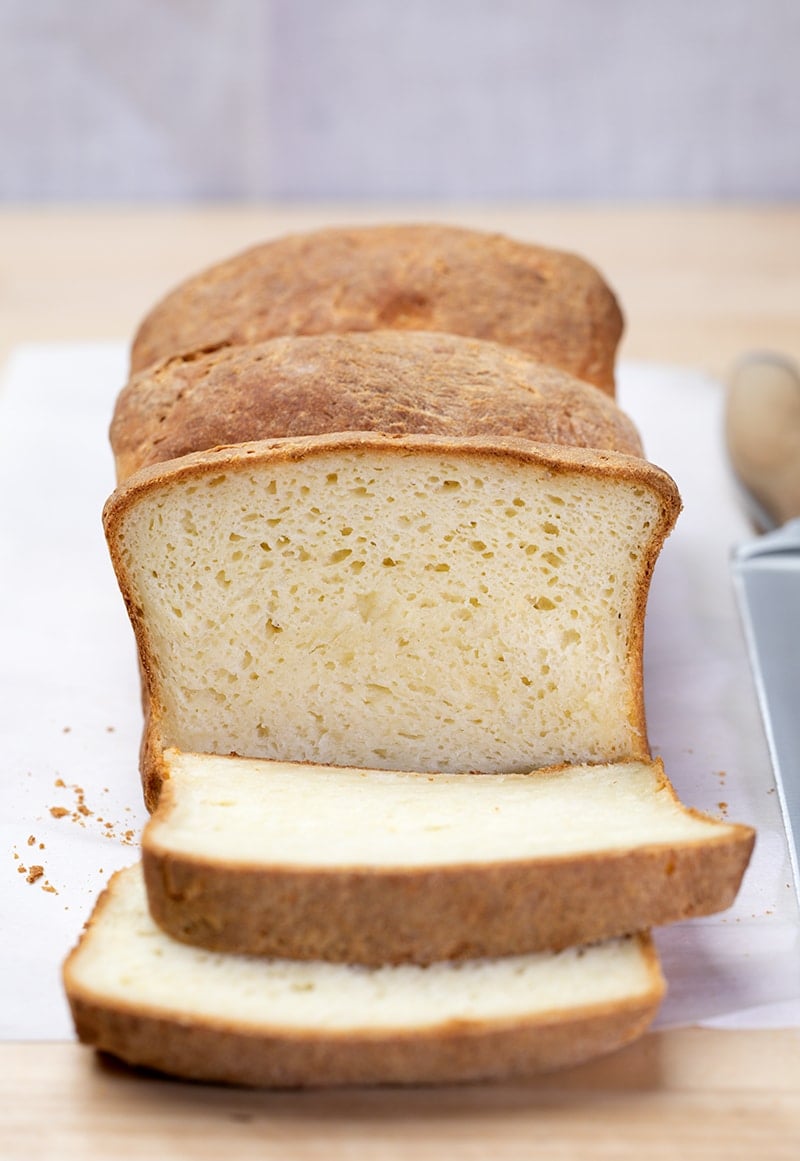
Imagine biting into a piece of bread that's incredibly soft, tender, and fluffy, with a thin, crisp, yet chewy crust that leaves you craving for more. Welcome to the world of gluten free Japanese milk bread, a delightful culinary experience that will redefine your expectations of gluten free bread.
This amazing recipe combines a simple cooked gluten free flour and water mixture and batter-style bread to create an unbelievably soft and pillowy texture that will leave you in awe.
Say goodbye to the dry, crumbly gluten free breads of the past and hello to the softest, most delicious, stay-fresh gluten free bread you've ever tasted!
Why you'll love this gluten free Japanese milk bread recipe
This loaf of bread is soft and tender without being super airy, like an English muffin bread. The crust is thin and crisp, but still tender and chewy.
It's basically the softest bread you'll ever eat—and it's simple to make, too. The simple method we use for this gf bread locks in moisture without making the dough difficult to handle or resulting in a soggy bread.
If you've never heard of a Japanese “water roux,” it's just a mixture of gluten free flour and water that's briefly cooked on the stovetop until it thickens. It's also known as tangzhong, which is designed to pre-gel the starches and help the bread stay fresher, longer.
A gluten free water roux is simple to make with just these 2 simple gluten free pantry ingredients, and you can even make it ahead of time. After making the roux, you'll let it cool and then add it to the rest of the gf bread ingredients and make the softest gf bread of your life!

How to work with batter-style bread recipes
I began making homemade gf bread way back in 2005, only my second year of baking gluten free at all. Those first breads were all in the “batter-style,” which simply means that the bread dough appears more like a cookie dough batter than what you would expect from yeast bread dough.
Since then, I've learned so much about gf yeast bread baking, much of which you can find in this post on how to make gluten free bread. Even though I've moved on to develop other methods, recipes like this gluten free Japanese milk bread and our old-style white gluten free bread still work beautifully—and have a special place in my kitchen (and my heart ❤️).
The raw bread dough itself in batter-style bread baking is wet and remains that way all the way through shaping since it doesn't “stretch” when raw. Gluten free flours are typically water-loving, and the original successes in gluten free yeast bread baking called for adding more liquid to the bread to enable the yeast to thrive.
If any yeast bread dough is too dry or becomes that way during its rising time, the yeast will not thrive and the bread dough will not rise. My bread recipes made with gluten free bread flour have something different (whey protein isolate and Expandex modified tapioca starch) added to them.
Without that, all purpose gluten free flours will absorb tons of the water in the recipe and dry out the dough without more moisture. And that leads to an underwhelming (or completely absent) rise.
These batter-style bread recipes aren't as easy to shape as conventional bread recipes, and the rise isn't as smooth. That's why you'll see pockmarks in the bread both before and after baking.
But they require fewer unfamiliar ingredients as my newer recipes, and they are much easier to adapt to accommodate additional allergies (please scroll down to the Ingredients and substitutions section for more detail on that).
Baking gluten free isn't quite as simple as switching conventional flour for gluten free.
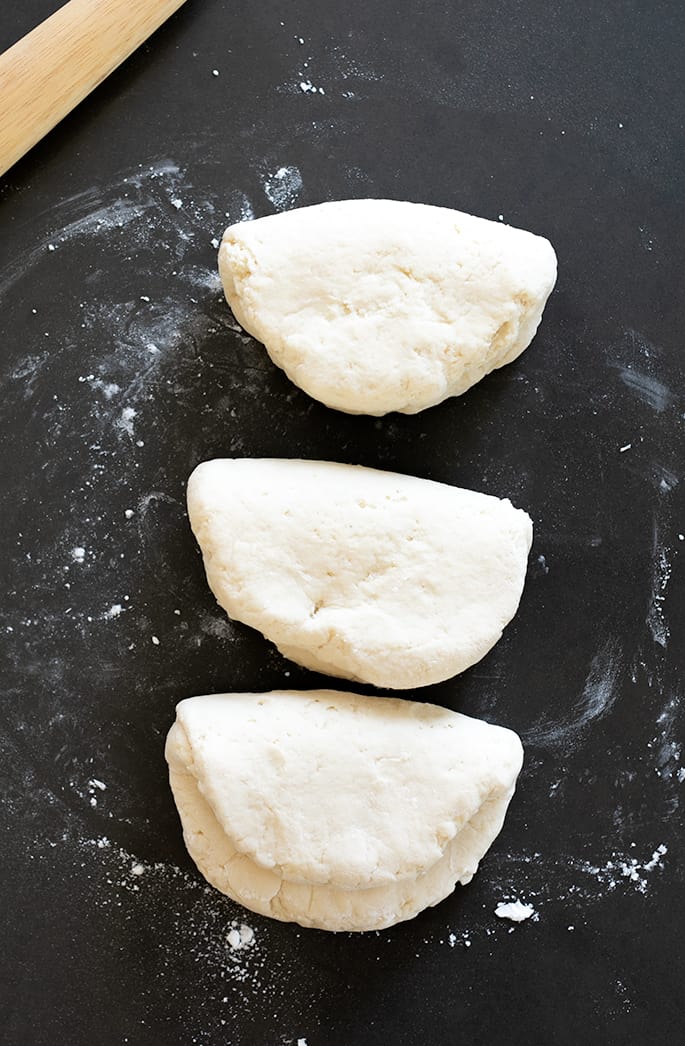
How to handle the raw dough
Since this batter-style bread dough is quite wet and must stay that way, keep in mind that the dough will be tacky to the touch both before, during and after shaping. It also will not rise as smoothly as we might like, taking on something of a cratered appearance.
You can smooth out the dough after its rise, if you like, with wet fingers but don't expect a tight rise. Even though the dough is wet, though, the moisture is still in balance with the other ingredients in the recipe. If you add too much moisture, the bread won't ever bake all the way through to the center and you'll end up with gummy spots.
You can sprinkle this dough very lightly with more flour as you're shaping it, but use as little as you possibly can. Try flouring your fingers a bit, rather than the dough very often, and use a light touch so the dough stays wet.
Remember that you won't be able to get the dough to be completely smooth on the outside since you're not making conventional bread, so let go of that goal!
You're using gluten free flour, not wheat bread flour, and you're making gluten free milk bread, not yeasted wheat bread. Let go of your preconceptions of how to make yeast bread and enjoy this recipe just as it is!
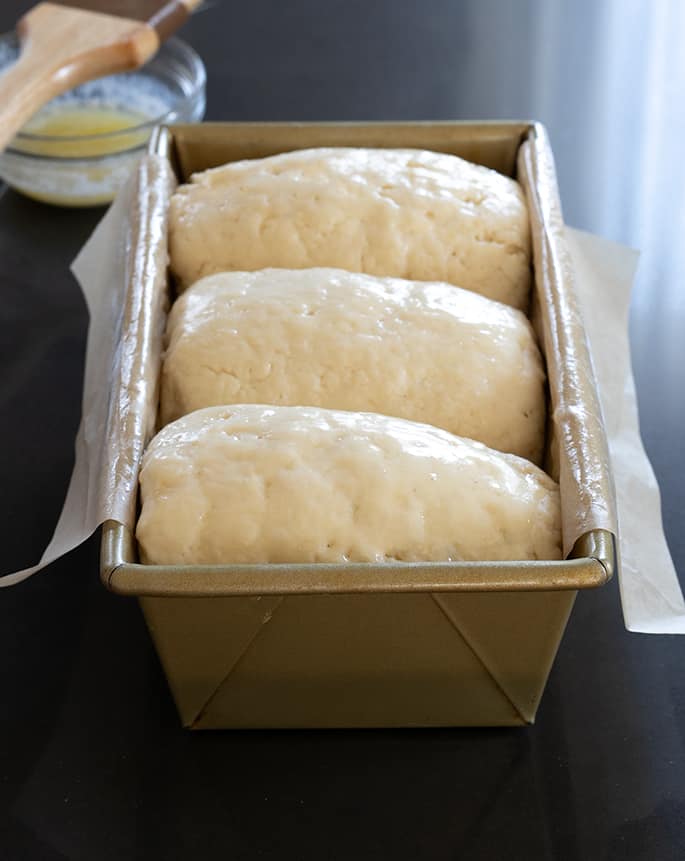
What is a water roux and how does it help the bread?
Our batter-style gluten free white sandwich bread develops a thick bakery-style crust on the outside. But this loaf of bread stays soft all the way through the end of its baking.
The water roux that you make at the start of the recipe helps lock in moisture. It's just a simple cooked mixture of gluten free flour and water.
The water roux can be made days ahead of time (and even doubled, then divided for each loaf), and stored in a sealed container in the refrigerator. That way, you can dump all the ingredients into your mixer whenever you're ready to make some bread without having to engage in that extra step of making the roux.
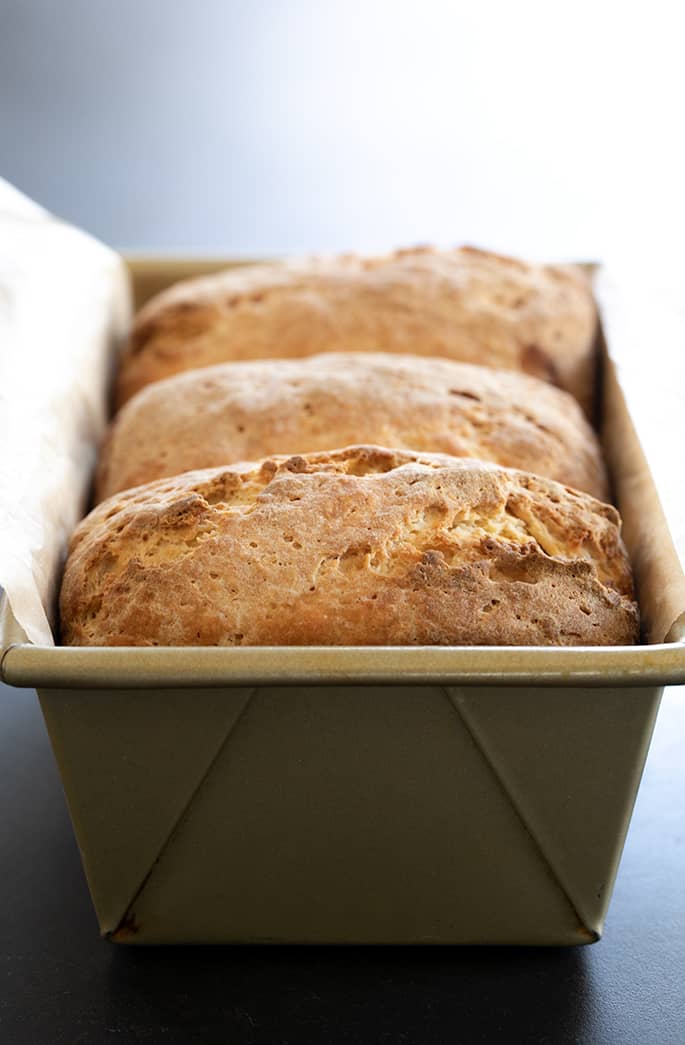
GF Japanese Milk Bread Ingredients and Substitution Suggestions
Dairy free Japanese milk bread
This recipe contains dairy in the form of butter and milk, both of which are generally not that difficult to replace. Instead of cow's milk, you can easily use unsweetened almond milk or coconut milk in the carton. Just be sure not to use anything nonfat (dairy or otherwise) since it has less richness and more additives.
Instead of the butter, try using Earth Balance buttery sticks in both the bread dough and for brushing the top of the bread. You might actually even be able to use a mild-tasting extra virgin olive oil in place of butter as well, but I haven't tested any fats in this recipe that are liquid at room temperature.
Can you make it without eggs?
Since there is only one egg in this recipe, you can try using a “chia egg” (1 tablespoon ground white chia seeds + 1 tablespoon lukewarm water, mixed and allowed to gel) in its place. Since this is a batter-style bread, you need a fair amount of help getting it to rise. Without the egg, even with an egg replacer, the bread will likely be denser.
Can you make this gluten free bread recipe without yeast?
No, you cannot make this yeasted bread without yeast as there is no proper substitute for bread-making yeast. Try my yeast free gluten free sandwich bread instead!
Replacing instant yeast with active dry yeast
If you only have active dry yeast, you can use that to replace instant yeast. Just use 25% more yeast (here, that would be a total of 10 grams for one loaf). You'll also have to hydrate the yeast in a few tablespoons of the recipe's milk volume before adding it to the dough at the same time as the rest of the milk.

Gluten Free Japanese Milk Bread
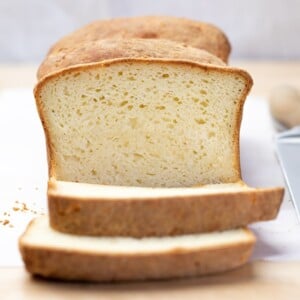
Ingredients
For the water Roux
- 3 tablespoons (26 g) all purpose gluten free flour blend, (I used Better Batter; click thru for full info on appropriate blends)
- ½ cup (4 fluid ounces) water
For the gf bread dough
- 3 cups (420 g) all purpose gluten free flour blend, (I used Better Batter; click thru for full info on appropriate blends), plus more for sprinkling
- 3 teaspoons xanthan gum, omit if your blend already contains it
- ¼ teaspoon cream of tartar
- ¼ cup (50 g) granulated sugar
- 2 ½ teaspoons (8 g) instant yeast, (also called rapid-rise or breadmaker yeast)
- ½ teaspoon kosher salt
- 1 teaspoon apple cider vinegar
- 1 (50 g (weighed out of shell)) egg, at room temperature
- 1 ¼ cups (10 fluid ounces) warm milk, (about 100°F)
- 4 tablespoons (56 g) unsalted butter, melted and cooled
- Water roux, at room temperature
- Melted butter, for brushing (optional)
Instructions
First, make the water roux.
- In a small saucepan, place the roux ingredients and whisk to combine well. Cook the roux over medium-high heat, whisking constantly, until thickened enough that the whisk leaves a visible trail.
- Remove it from the heat immediately and allow to cool to at least warm room temperature. The roux can be made ahead of time and stored in a sealed container in the refrigerator. Just allow it to come to room temperature before baking with it.
Make the bread dough.
- Grease and line a standard 9-inch x 5-inch loaf pan and set it aside.
- In the bowl of a stand mixer fitted with the paddle attachment, place 3 cups of the flour, xanthan gum, cream of tartar, sugar and yeast, and whisk with a separate handheld whisk to combine well. Add the kosher salt, and whisk once again to combine.
- Add the vinegar, egg, milk, butter, and water roux, and mix well on low speed. Once the dry ingredients have been incorporated into the wet ingredients, turn the mixer up to high speed and allow to mix for about 3 minutes. The dough should be shaggy and tacky to the touch.
- Turn the dough out onto a very lightly floured surface, and divide into 3 equal portions (each about 350 grams). Work with one piece of dough at a time.
- Pat out the first piece of dough into a flat disk about 3/4-inch thick. Fold the disk loosely in half from one short end to the other. Repeat with the remaining pieces of dough.
- Stack the folded pieces of dough one behind the other, the rounded (folded) part facing up. The shaped pieces of dough should fit snugly in the pan from end to end, and will rise up, not out.
- Spray the dough lightly with warm water, and cover the pan loosely with plastic wrap. Place in a warm, draft-free location to rise until it has reached about 150% of its original volume.
- While the dough is rising, preheat your oven to 350°F.
- Once the dough has finished rising, remove the plastic wrap, brush lightly with the optional melted butter, and place in the center of the preheated oven. Bake for 45 minutes.
- Remove the bread from the loaf pan and transfer to a rimmed baking sheet. Return the bread on the baking sheet to the oven.
- Continue to bake until the loaf sounds hollow when thumped on the side and reads about 190°F when an instant-read thermometer is inserted in the center of the loaf and is lightly golden brown all over (about another 10 minutes). Remove the loaf from the oven and transfer it to a wire rack to cool completely before slicing and serving.
Video
Nutrition
Nutrition information is automatically calculated, so should only be used as an approximation.


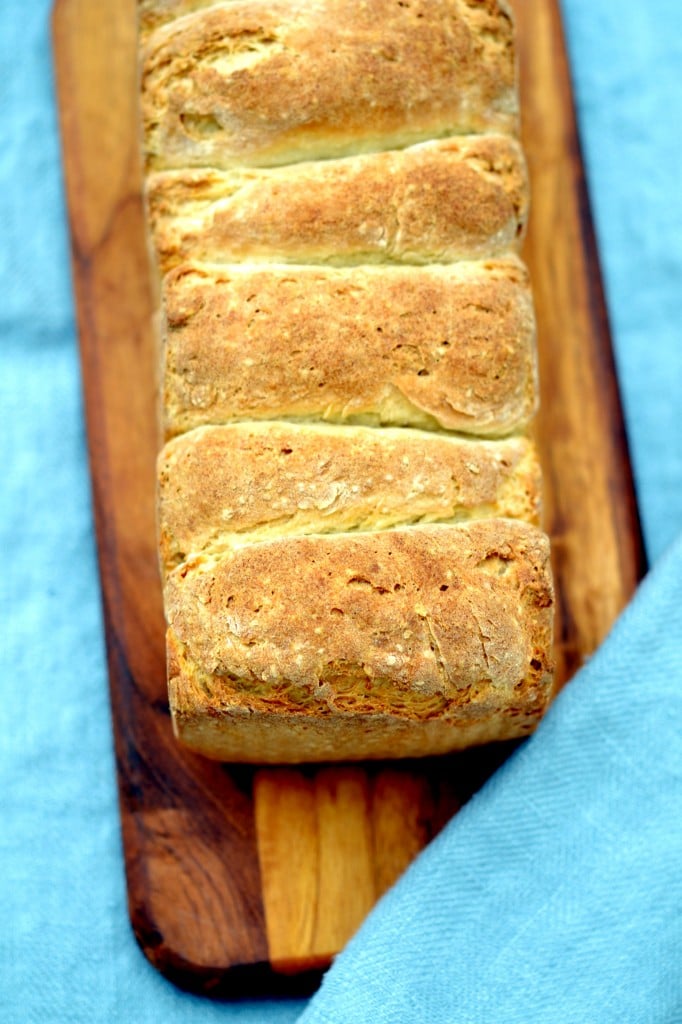
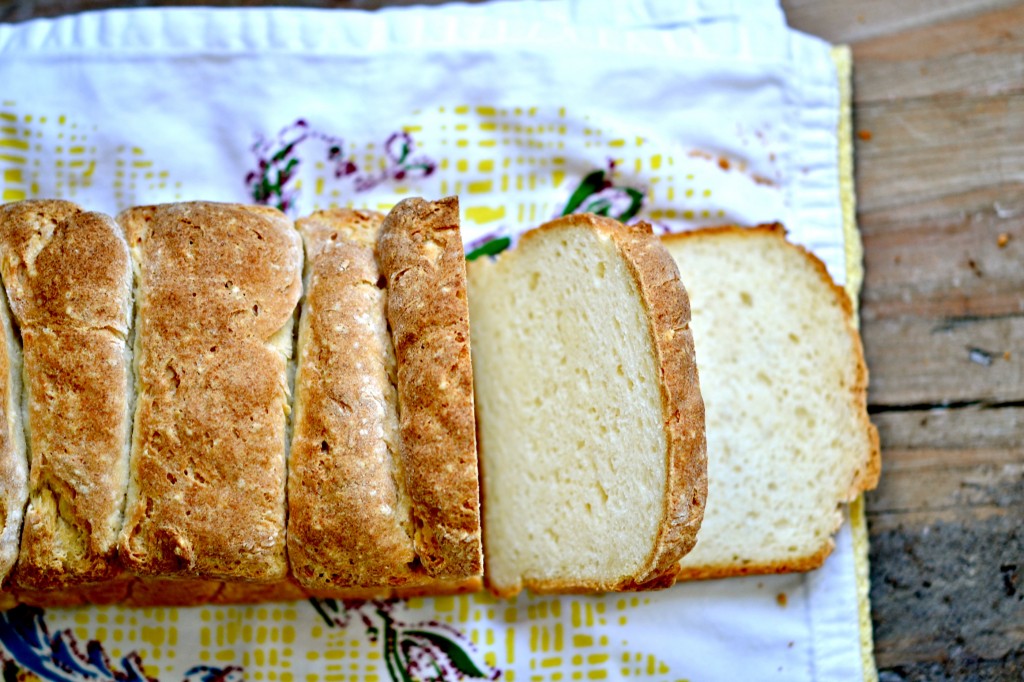

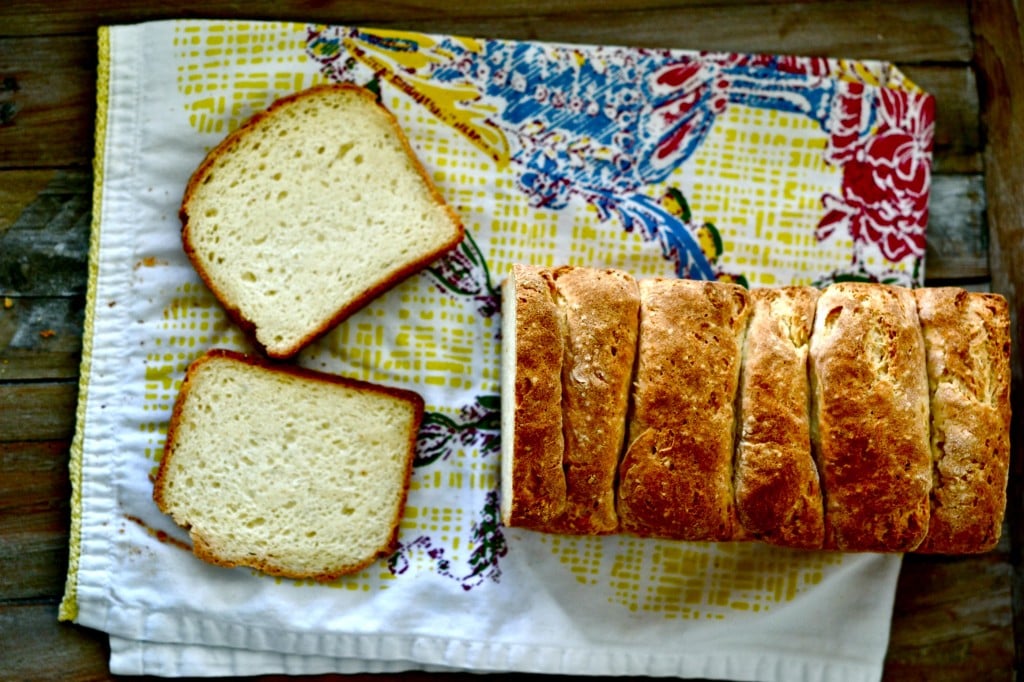

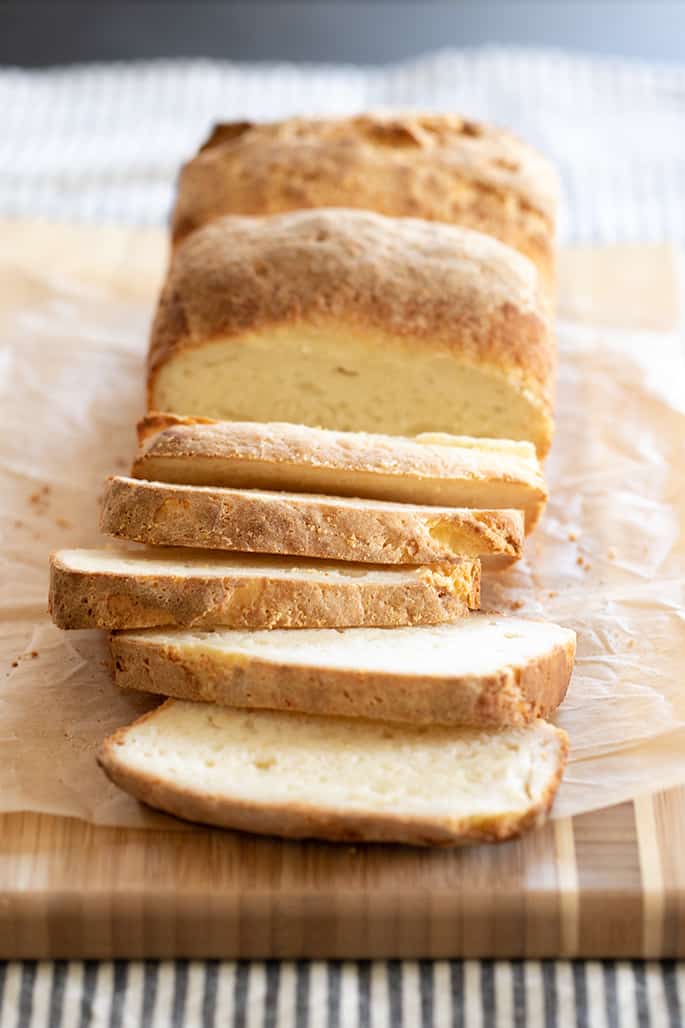
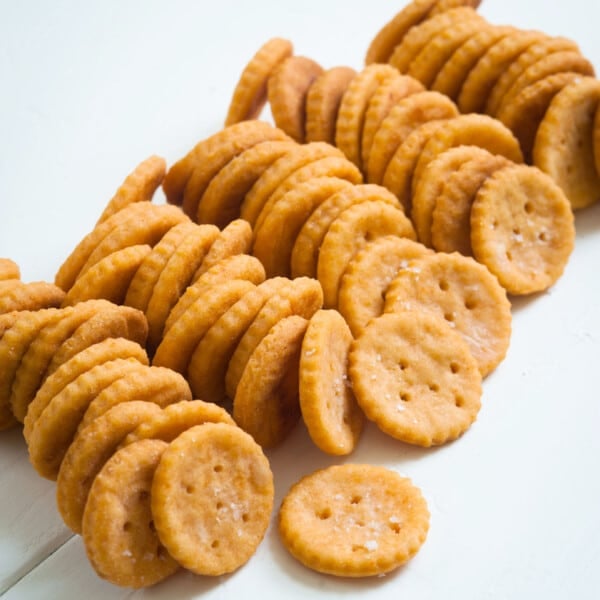


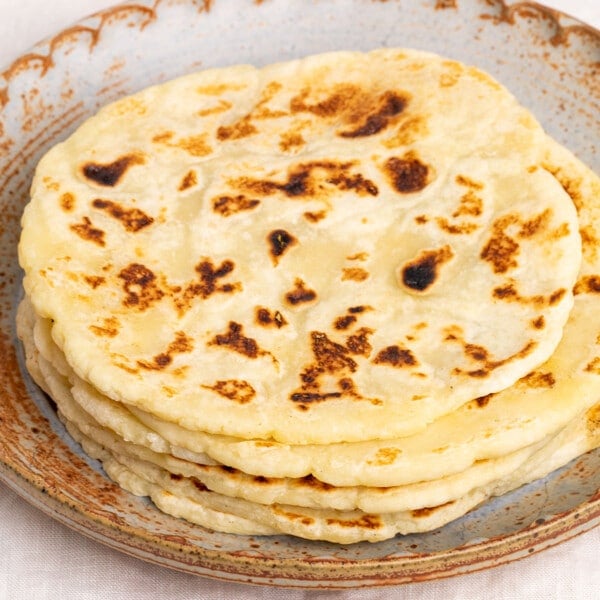









here’s a link to the photo of my bread still cooling!
http://www.flickr.com/photos/sbergeron00/6781104706/in/photostream/
I have my bread in the oven–actually I just took it out of the pan and put it back in the oven just a moment ago. it looks awesome!
I already know that the dough tastes yummy because I had a small chunk of the dough that wouldn’t fit in my 8.5×4.5 USA Pans. The bread is browning wonderfully!
So, I cut my flattened disk into 4 pieces let them raise while my little baby deep fryer heated to 350 degrees. Then I fried them up and topped with a small amount of maple frosting.
I can hardly wait to get my next batch of dough made (Looks like Sunday after my Hubby’s birthday party–gotta get the chocolate Whoopie Pies made on Saturday–YUM!!!
Oh My goodness! Light, Fluffy, Soft fried doughnuts.
Cannot WAIT to try!
Just so you know…my pastry instructor in culinary school referred to dough being shaggy all. the. time! What does that BOOK editor know anyway?!
P.S. – Your GF blog is my favorite of all!
Hi, Jen,
Ha! So glad to know that about your pastry instructor! In fairness, it was a magazine editor (my book editor is a dream), and she doesn’t even cook! What-does-she-know indeed. Thanks, Jen. So glad you enjoy the blog. :)
xoxo Nicole
You never cease to amaze me. This is a beaut! I know this seems weird but I really want to smell that bread, like now!
I am breaking down and getting the Brod and Taylor. I also want the pullman and the muffin pan from USA Pans.
I hope my husband will still respect YOU in the morning (when the bill comes). I tell him that you are bossy and make me buy things. ;-)
xo
Kristi, I would not dispute even one thing you said. I am bossy, and I do make you buy things. And I take full responsibility for it.
And it doesn’t sound weird to me at all that you want to smell that bread. It smells amazing. Unlike any other bread I’ve made before. It’s really different.
xoxo Nik
I’m baking this bread tomorrow after I remove the snow from the driveway. I have the flour problem, (no more gritty bread), settled and am back in business, (so to speak), baking again. I really miss soft bread.
Unrelated to this recipe, two thumbs up to you for the Pound Cake recipe from your book. It is the best I’ve ever made. Thanks.
P.S. I love to read cookbooks and have at least 30-40, some from when my parents got married 56 years ago. So am I a food dork too? Is there some sort of secret handshake?
Hi, JoAnn,
Glad you’re back in the saddle. So glad you liked the pound cake! It takes a lot of tender-loving care, but it’s worth it. You are clearly a Food Dork. Check your wallet, there must be a card in there somewhere. :)
xoxo Nicole
You truly are a fantastic human being! We are truly spoiled with such a talented soul as yourself. Not only great recipes, but prompt responses. You really shouldn’t be so kind … next time ;-) … this is time is fabulous!
A million thanks!
Hi Nicole, this bread looks great! I’ve been trying many different bread recipes lately and I think this one might be a winner. I was looking at the original recipe that you adapted yours from and wondering if you tried rolling the dough into cylinders at all? If so, what were your results like?
Do you think it would work with a hand mixer? Silly question I know, most dough is too hard to mix with a hand mixer, but just curious. Thanks so much for all your work!!
This looks wonderful!. Interesting reference to ‘Japanese water roux.’ I first learned about this method in a book by Chinese writer Yvonne Chen (“65 Degrees”) in which she coined this dough mixture as ‘tang zhong.’ In any case, it’s a wonderful method of keeping bread soft. I never thought I’d miss that Wonder Bready softness, but here it is….:-)
You did, Pam?! I can’t believe it! I know it’s expensive, but you know I wouldn’t recommend it so highly if it weren’t worth it. Think of all the bread you’ll make without having to worry about its rising perfectly. I can’t wait until you see! Congratulations!
xoxo Nicole